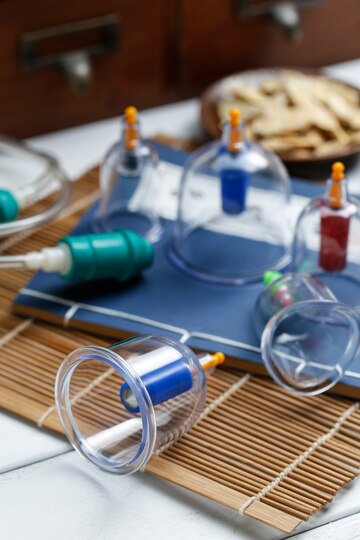


Migraines are a common but often debilitating condition, and many sufferers find little relief from conventional medications.
Assalamu Alaikum,
Migraines are a serious medical condition affecting millions of people worldwide. These intense headaches, often accompanied by nausea, vomiting, and extreme sensitivity to light and sound, can drastically impact one’s quality of life. For many, standard medication such as painkillers or migraine-specific treatments only offer temporary relief. However, there is a growing body of evidence suggesting that Hijama (cupping therapy) can offer a natural, effective treatment for migraines. In this article, we dive into a real-life case study that demonstrates the profound impact Hijama can have on alleviating migraine symptoms.
The case study was shared by Sr. Sahra Mire, a skilled Hijama practitioner and a graduate of Hijama Nation Academy (HNA) based in London. Sr. Sahra has been working as a Hijama practitioner for several years and has successfully helped countless patients find relief from a variety of conditions, including migraines. In this particular case, her patient—a female school teacher—had been battling chronic migraines for two years, and Hijama provided her with much-needed relief.
The patient, a dedicated school teacher in her early 30s, had been struggling with debilitating migraines for over two years. The migraines began soon after she started her teaching career, which also meant a significant increase in her stress levels due to the demands of the job. The migraines were severe, occurring roughly every fortnight, and they were often accompanied by throbbing pain on one side of her head, as well as nausea and vomiting.
Like many migraine sufferers, she tried conventional medications, particularly ‘Migraleve,’ which provided some relief, but only temporarily. She felt trapped in a cycle where the pain would subside, only to return again with even more intensity after a few days. As a teacher, she found it increasingly difficult to manage the responsibilities of her job and the physical toll that her migraines were taking on her body.
The patient was desperate for a solution that would not only address the symptoms of her migraines but also provide a long-term remedy. This is when she turned to Hijama therapy after hearing about its benefits from a friend who had undergone treatment for a different health issue. She was intrigued by the natural approach of Hijama and the potential it had to help her manage her migraine condition.
Sr. Sahra’s approach was holistic and aimed at addressing both the physical and emotional causes of the migraines. Recognizing the role that stress played in triggering her migraines, Sr. Sahra focused on reducing the patient’s stress levels while also targeting the physical tension in her body. The treatment plan included several key components:
Hijama (Cupping Therapy): The patient underwent a series of Hijama sessions, with the primary focus on the head area. Hijama involves creating suction on the skin using cups, which can help to improve blood circulation, relieve muscle tension, and reduce inflammation. Sr. Sahra explained to the patient that the head and neck areas are often major sites of tension and blockage, which could be contributing to her migraine attacks. By releasing this tension and promoting better blood flow, Hijama could help alleviate both the severity and frequency of her migraines.
Massage Therapy: In addition to Hijama, the patient received soothing massages to help relax her muscles and further reduce any stress-related tension. The massages were specifically aimed at the neck, shoulders, and upper back, areas that often harbor tension and can contribute to migraine triggers.
Olive Oil Treatments: The patient was also advised to apply olive oil to her scalp and forehead. Olive oil has anti-inflammatory properties, which can help to calm irritated muscles and reduce swelling. Applying it on a regular basis could support the effects of the Hijama therapy by continuing to promote relaxation and improve circulation in between sessions.
Increasing Water Intake: Dehydration is another common trigger for migraines, so Sr. Sahra recommended that the patient increase her water intake. By staying hydrated, the patient could help to prevent dehydration-related headaches and also support the body’s natural healing process.
Stress Management Guidance: One of the most significant factors contributing to the patient’s migraines was the high stress levels associated with her job. Sr. Sahra worked with the patient to develop practical strategies for managing stress, including deep breathing exercises, mindfulness techniques, and taking regular breaks throughout the day to rest and recharge.
Visit the full article on our website: Can Hijama Help with Migraines?
